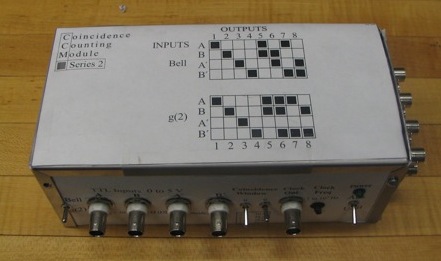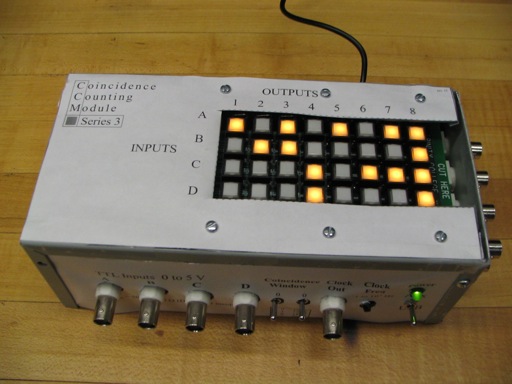Coincidence counting is the detection of two or more particles at separate detectors within a short interval of time. This technique is used either to gate a detector for noise rejection, or to study the joint properties of two or more particles, which often exhibit striking quantum-mechanical features such as entanglement. Coincidence counting is used in the experimental study of subatomic particle collisions, radioactive nuclear decay, and in countless atomic, molecular, and optical physics experiments.
In collaboration with Mark Beck at Whitman College, we have developed a hand-held, four-input Coincidence Counting Module (CCM) that anyone can build. The CCM offers a fast and inexpensive alternative to traditional, commercially-available coincidence-counting methods. The original design is described in this article. We improved upon this to create two newer versions, which are described briefly here (with supplemental material) and in more detail here.
 |
Series 2 is the simplest to build, and performs up to 3-fold coincidence counting. |
 |
Series 3 performs up to 4-fold coincidence counting and allows full control of the logic. |
Both models can interface with a computer via USB, and coincidence counts can be recorded with the software below:
| Computers with LabVIEW 2009 or higher | Computers without LabVIEW 2009 or higher |
CCM 3.8.1 Project Files (~ 6 MB)
|
CCM 3.8.1 Installer (~100 MB) (The above link may not work in Firefox. Other browsers seem ok.) |
You will also need the CCM 3.8.1 Software Manual (DRAFT) -- Revisions from an older version are still pending.
If you are interested in constructing a CCM, click here to request a parts list and instructions.